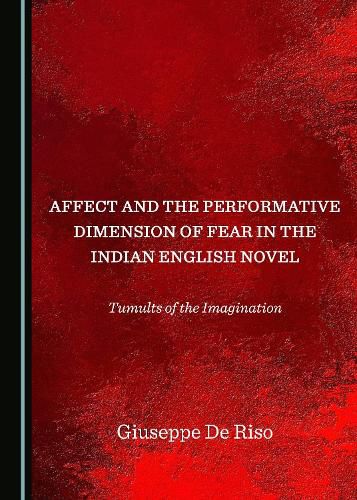Readings Newsletter
Become a Readings Member to make your shopping experience even easier.
Sign in or sign up for free!
You’re not far away from qualifying for FREE standard shipping within Australia
You’ve qualified for FREE standard shipping within Australia
The cart is loading…






This volume provides a critical reading of Khushwant Singh’s Train to Pakistan (1956), Neel Mukherjee’s The Lives of Others (2014) and Rohinton Mistry’s A Fine Balance (1995) to provide a literary account of three fundamental moments in India’s history: the Partition of 1947, the Naxalbari movement, and Indira Gandhi’s Emergency.These novels provide literary interpretations of the ways in which feelings of fear and insecurity connected with ethno-religious rivalries, as well as with new power shifts in Indian socio-economic structure, gave a significant contribution to the formation of the political landscape in post-colonial India. More specifically, defying any kind of identitarian juxtaposition (be it related to ethnic belonging, religion, sexuality, or social class), the present work reads those three major novels in Indian English fiction to investigate how episodes of violence, in the first three decades after India’s independence from the British Empire, were enacted under the influence of cultural images and affects which legitimised different social groups to claim for themselves the right to prevail over others, or even take their lives.The volume starts with a reflection on the spreading of rumours during Partition in Train to Pakistan (1956) and their power to turn friendly communities into sworn enemies. The analysis proceeds then to discuss how the newborn government’s struggle to stifle the Naxalbari movement, as it described in The Lives of Others, was partly sustained by paranoiac feelings projected by the new metropolitan bourgeoisie on the people living in the rural parts of the country. The historical itinerary concludes with an analysis of A Fine Balance’s description of the two main political objectives of the Emergency: the beautification of India and the reduction of the country’s population. Both appear to be revealing moments of a predatory character present in the new Indian democratic institutions, transmitted as a kind of bodily contagion.
$9.00 standard shipping within Australia
FREE standard shipping within Australia for orders over $100.00
Express & International shipping calculated at checkout
This volume provides a critical reading of Khushwant Singh’s Train to Pakistan (1956), Neel Mukherjee’s The Lives of Others (2014) and Rohinton Mistry’s A Fine Balance (1995) to provide a literary account of three fundamental moments in India’s history: the Partition of 1947, the Naxalbari movement, and Indira Gandhi’s Emergency.These novels provide literary interpretations of the ways in which feelings of fear and insecurity connected with ethno-religious rivalries, as well as with new power shifts in Indian socio-economic structure, gave a significant contribution to the formation of the political landscape in post-colonial India. More specifically, defying any kind of identitarian juxtaposition (be it related to ethnic belonging, religion, sexuality, or social class), the present work reads those three major novels in Indian English fiction to investigate how episodes of violence, in the first three decades after India’s independence from the British Empire, were enacted under the influence of cultural images and affects which legitimised different social groups to claim for themselves the right to prevail over others, or even take their lives.The volume starts with a reflection on the spreading of rumours during Partition in Train to Pakistan (1956) and their power to turn friendly communities into sworn enemies. The analysis proceeds then to discuss how the newborn government’s struggle to stifle the Naxalbari movement, as it described in The Lives of Others, was partly sustained by paranoiac feelings projected by the new metropolitan bourgeoisie on the people living in the rural parts of the country. The historical itinerary concludes with an analysis of A Fine Balance’s description of the two main political objectives of the Emergency: the beautification of India and the reduction of the country’s population. Both appear to be revealing moments of a predatory character present in the new Indian democratic institutions, transmitted as a kind of bodily contagion.